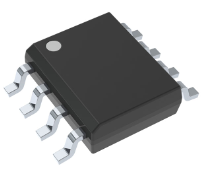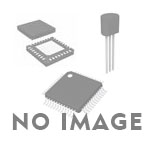- Online chat

SN65HVD233DR
The SN65HVD233DR is a high-performance RS-485 half-duplex transceiver from Texas Instruments, designed for robust industrial communication in harsh environments. This device supports data rates up to 25 Mbps and operates over a wide supply voltage range of 3.3V to 5.5V, making it suitable for both low-power and standard industrial applications. It features a differential signal transmission architecture, enabling reliable communication over long distances (up to 1,200 meters) with up to 32 nodes on a single bus. Housed in a compact SOIC-8 package, it simplifies integration into space-constrained designs while ensuring compliance with the RS-485 standard (TIA/EIA-485-A).
Key Features
The SN65HVD233DR provides a wide common-mode voltage range of -7V to +12V, ensuring stable operation in noisy industrial settings. It includes integrated ESD protection (±15 kV HBM) and short-circuit protection on the bus lines, enhancing reliability. The device supports automatic fail-safe mode to prevent bus contention and includes a selectable termination resistor for impedance matching. With low power consumption (1.2 mA active, 50 µA standby), it extends battery life in remote IoT devices. It operates over an extended temperature range of -40°C to +85°C, ensuring performance in extreme environments.
Applications
Primarily used in industrial automation, the SN65HVD233DR is critical for fieldbus communication in PLCs, SCADA systems, and process control equipment. It is widely employed in smart grids, building automation, and sensor networks where reliable long-distance data transmission is required. Its low power and compact design make it suitable for battery-operated devices, while its robustness suits automotive diagnostics, robotics, and maritime systems.
Summary
The SN65HVD233DR combines high-speed communication, robust ESD protection, and wide operating voltage compatibility, making it a premier choice for RS-485-based industrial and IoT applications. Its compact form factor, fail-safe features, and tolerance to harsh environments ensure seamless integration into systems demanding reliable, long-distance data transmission. This transceiver is indispensable for engineers designing industrial control, automation, and remote monitoring systems where noise immunity and reliability are critical.




